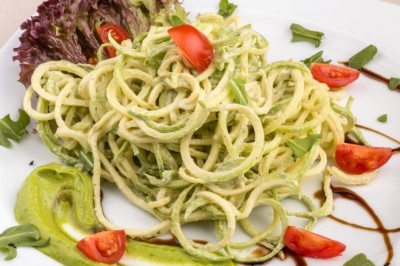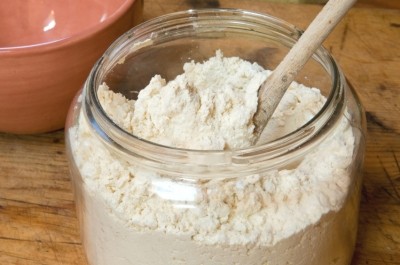Cooking pasta removes certain wheat allergens

The study, published in the Journal of Agricultural and Food Chemistry, used an in vitro model which mimicked oral, gastric and intestinal digestion of a commercial brand of cooked pasta.
The scientists, led by Gianfranco Mamone of the Institute of Food Science in Rome, say the results have particular relevance for sufferers of wheat allergies and coeliac disease.
“These results …provide new insights for establishing the evolution of wheat proteins during pasta processing, cooking, and digestion in humans.. and insights into the possible immunological implications and the possible effects of gluten resistant epitopes on human health," says the study.
"Our study could be applied for the technological design of pasta products with reduced allergenic potential," Gianfranco Mamone told FoodNavigtaor.
Mamone et al. found that 61 polypeptides, including gliadin and glutenin which are harmful to coeliac disease sufferers, survive digestion.
However, they noted that other non-gluten allergens – α-amylase/trypsin Inhibitors or ATIs – known to trigger reactions such as baker’s asthma, are completely lost during cooking. They suggest this is the reason why, for these allergy sufferers, pasta may be easier to digest than baked wheat goods.
The study
The researchers used simulated saliva, simulated gastric fluid and simulated intestinal fluid prepared in harmonized conditions.
Five grams of cooked pasta and 5 mls of saliva was ‘chewed’ by a mincer for two minutes. The scientists then added porcine pepsin, fungal lipase and egg lecithin to mimic gastric juices. The pH value was adjusted to 3 and digestion in the stomach and intestine was carried out in a shaking incubator.
To simulate the final stage of digestion in the duodenum was simulated by incubating the digested content with intestinal membrane from pigs.
Using liquid chromatography and mass spectrometry, the researchers identified 61 polypeptides that survived in vitro digestion, including gliadin and glutenin peptides, which contain the amino acid sequences responsible for triggering coeliac disease.
Among the wheat allergens they found that only one – non specific-lipid transfer protein or nsLTP – remained, suggesting it is highly resistant to both cooking and digestion.
"nsLTP is a very heat- and digestion stable protein. So it would be difficult to remove it from flour. However we can hypothesize that an opportune breeding program could launch a wheat variety with reduced content of this protein," said Mamone.
The researchers also analysed the water in which the pasta was cooked for leached proteins and found that it had a high ATI content.
The rise of gluten-free
Wheat gluten and related proteins from oat, rye and barley can trigger coeliac disease, an autoimmune reaction to gluten, in individuals who are genetically susceptible.
And while gluten-free products are a necessity for people who suffer from coeliac disease, some 72% of consumers who buy gluten-free products have not been diagnosed with the disease, according to Mintel data.
Instead they may suffer from an intolerance or sensitivity, or buy gluten-free in the belief that it is healthier.
“‘Lifestylers’ have contributed to the growth of the market, and will remain important for its future performance,” says Mintel analyst Douglas Faughnan.
In 2014 of new products launches making a gluten-free claim in the UK rose by 4% to hit the 10% mark, compared with 24% in the US.
Source: The Journal of Agricultural and Food Chemistry
Published online ahead of print, 14 Feb 2015, DOI: 10.1021/jf505461x
"Tracking the Fate of Pasta (T. Durum Semolina) Immunogenic Proteins by in Vitro Simulated Digestion"
Authors: G. Mamone, C. Nitride et al.


















